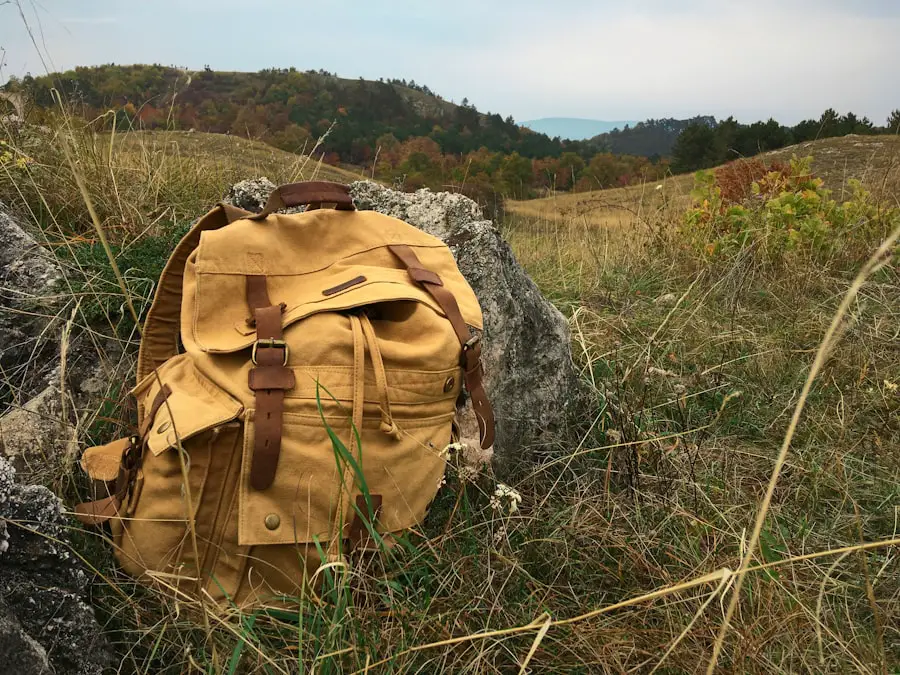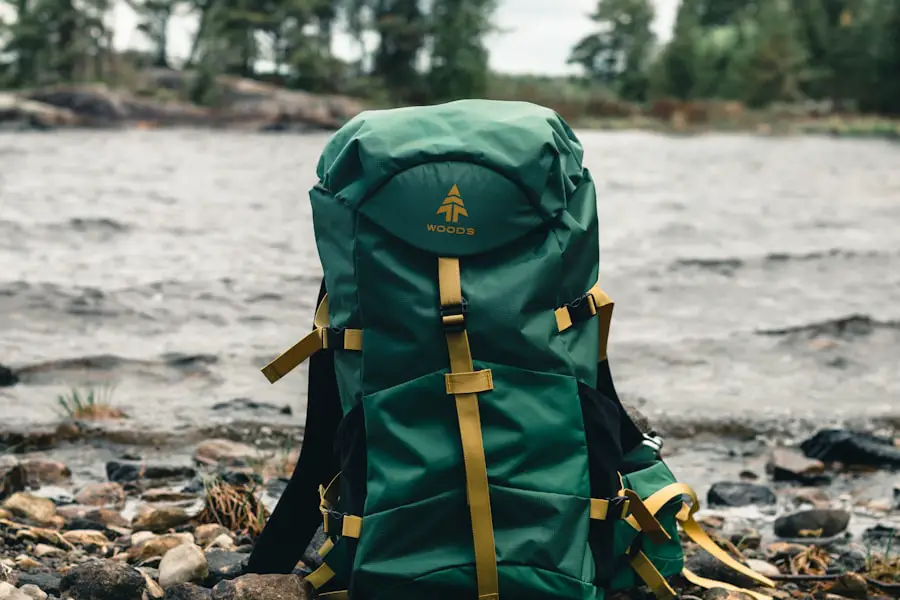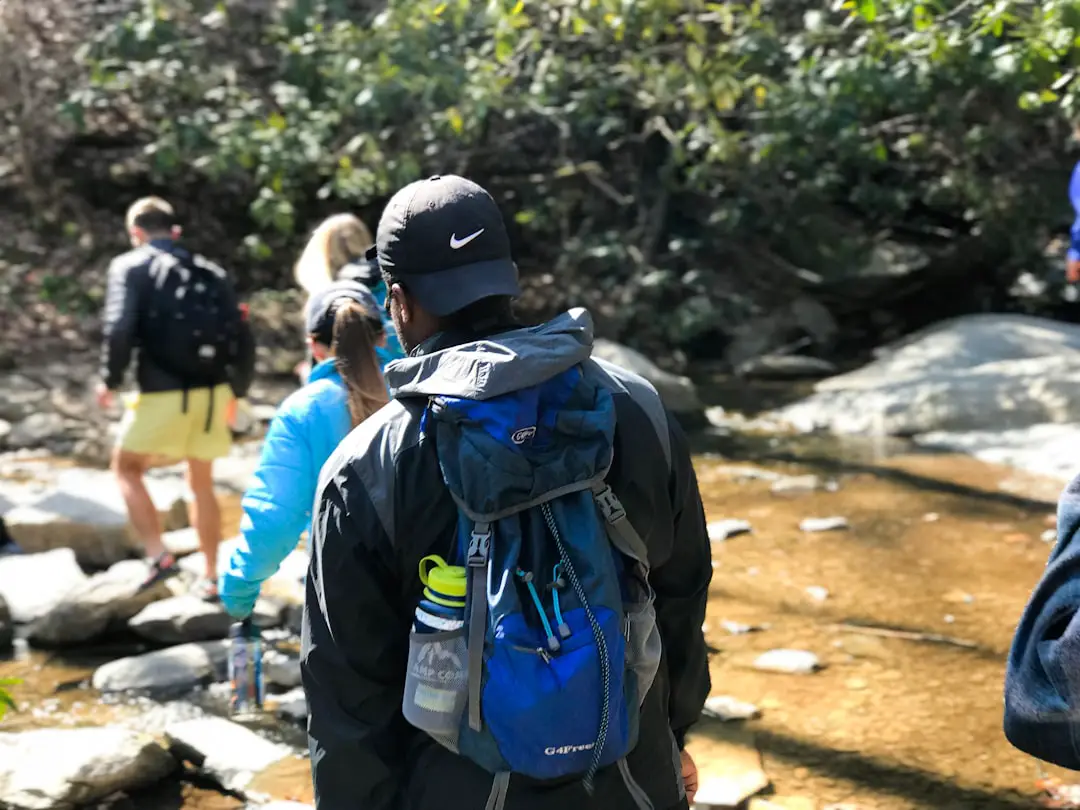Hiking is an exhilarating way to connect with nature, offering both physical challenges and mental rejuvenation. However, the experience can be significantly enhanced or hindered by the gear one chooses to bring along. The right equipment not only ensures comfort and safety but also allows hikers to fully immerse themselves in the beauty of their surroundings.
From the clothing worn to the tools carried, each piece of gear plays a crucial role in the overall hiking experience. Understanding the various types of hiking gear available can help both novice and seasoned hikers make informed decisions that suit their specific needs. The world of hiking gear is vast and diverse, encompassing everything from specialized clothing to essential tools.
As outdoor enthusiasts venture into different terrains and climates, the importance of selecting appropriate gear becomes increasingly evident. Whether traversing rocky mountain paths, wandering through lush forests, or navigating arid deserts, having the right equipment can make all the difference. This article will delve into the essential categories of hiking gear, providing insights into their significance and practical applications for hikers of all levels.
Key Takeaways
- Proper hiking gear is essential for a safe and enjoyable outdoor experience.
- Choose clothing and footwear that is moisture-wicking, breathable, and suitable for the terrain.
- Backpacks and daypacks should be comfortable, adjustable, and have enough storage for essentials.
- Navigation tools such as maps, compasses, and GPS devices are crucial for staying on track.
- Stay hydrated and fueled with a hydration system and nutritious snacks while on the trail.
Clothing and Footwear
When it comes to hiking, clothing and footwear are arguably the most critical components of a hiker’s gear. The right attire not only protects against the elements but also enhances mobility and comfort during long treks. Layering is a fundamental principle in outdoor clothing, allowing hikers to adapt to changing weather conditions.
Base layers made from moisture-wicking materials help keep sweat away from the skin, while insulating layers provide warmth in cooler temperatures. Finally, an outer layer, often waterproof or windproof, shields against rain and wind, ensuring that hikers remain dry and comfortable. Footwear is equally vital, as it directly impacts stability and support on uneven terrain.
Hiking boots come in various styles, including lightweight trail runners for fast-paced hikes and sturdy boots designed for rugged landscapes.
A well-fitted boot with adequate ankle support can prevent injuries such as sprains or blisters, which are common complaints among hikers. Additionally, features like waterproof membranes and aggressive tread patterns enhance traction and durability, making them suitable for various conditions.Choosing the right footwear is a personal decision that should take into account the type of hiking planned, as well as individual comfort preferences.
Backpacks and Daypacks

A reliable backpack is an essential piece of gear for any hiker, serving as the primary means of carrying supplies and personal items. The choice between a daypack and a larger backpack depends on the duration of the hike and the amount of gear needed. Daypacks are typically smaller, designed for short excursions where minimal gear is required.
They often feature compartments for hydration reservoirs, snacks, and other essentials, making them ideal for quick trips or day hikes. For longer treks or multi-day adventures, larger backpacks with a capacity of 50 liters or more become necessary. These packs are designed to distribute weight evenly across the body, reducing strain on the back and shoulders.
Features such as adjustable straps, hip belts, and ventilation systems enhance comfort during extended use. Additionally, many backpacks come equipped with external attachment points for trekking poles or sleeping bags, allowing hikers to customize their load based on specific needs. Selecting the right backpack involves considering factors such as fit, capacity, and intended use to ensure a comfortable hiking experience.
Navigation Tools
| Navigation Tools | Metrics |
|---|---|
| GPS | Accuracy, Signal Strength, Coverage |
| Compass | Directional Accuracy, Calibration |
| Maps | Detail Level, Update Frequency |
| Satellite Navigation | Connectivity, Reliability |
In the wilderness, reliable navigation tools are indispensable for ensuring that hikers stay on course and reach their destinations safely. Traditional maps and compasses remain fundamental tools for outdoor navigation, providing essential information about terrain features, elevation changes, and potential hazards. While digital navigation tools such as GPS devices and smartphone applications have gained popularity due to their convenience and accuracy, they should not be solely relied upon.
Battery life can be unpredictable in remote areas, making it crucial for hikers to possess traditional navigation skills. In addition to maps and compasses, many hikers benefit from using wayfinding apps that offer offline capabilities. These applications can provide real-time tracking and route planning based on GPS data while allowing users to download maps for offline use.
However, it is essential to familiarize oneself with these tools before heading out into the wilderness. Understanding how to read a map or use a compass effectively can be invaluable in situations where technology fails or when navigating through challenging landscapes.
Hydration and Nutrition
Staying hydrated is paramount during any hiking excursion, as dehydration can lead to fatigue, dizziness, and impaired cognitive function. Carrying an adequate supply of water is essential; many hikers opt for hydration reservoirs or water bottles that fit conveniently in their backpacks. Some advanced hydration systems even include built-in filters that allow hikers to refill from natural water sources safely.
It’s important to plan ahead by knowing where water sources are located along the trail or carrying enough water for the entire hike. Nutrition also plays a critical role in maintaining energy levels on the trail. Hikers should pack lightweight, high-energy snacks that are easy to consume while on the move.
Options such as trail mix, energy bars, jerky, and dried fruits provide quick sources of fuel without adding excessive weight to a pack. For longer hikes, planning meals that are easy to prepare and carry is essential; dehydrated meals or pre-packaged options can be convenient choices that require minimal cooking equipment. Balancing hydration and nutrition ensures that hikers remain energized and focused throughout their journey.
First Aid Kit

A well-stocked first aid kit is an essential component of any hiking gear setup. Accidents can happen at any time in the outdoors, from minor scrapes and insect bites to more serious injuries like sprains or fractures. A comprehensive first aid kit should include items such as adhesive bandages, antiseptic wipes, gauze pads, adhesive tape, pain relievers, and any personal medications required by members of the hiking group.
Additionally, including items like blister treatment supplies can be particularly beneficial for long hikes where foot discomfort may arise. Beyond basic supplies, it’s also wise to include a first aid manual or guide within the kit. This resource can provide valuable information on how to respond to various injuries or emergencies encountered while hiking.
Familiarizing oneself with first aid techniques before heading out can empower hikers to act quickly and effectively in case of an emergency. Regularly checking and replenishing first aid supplies ensures that the kit remains ready for use whenever needed.
Shelter and Sleeping Gear
For those planning overnight hikes or multi-day backpacking trips, shelter and sleeping gear become critical considerations. A lightweight tent or tarp provides protection from the elements while allowing hikers to rest comfortably at night. When selecting a shelter, factors such as weight, ease of setup, and weather resistance should be taken into account.
Some tents are designed specifically for backpacking, offering a balance between durability and portability without sacrificing comfort. Sleeping gear also plays a significant role in ensuring a good night’s rest during outdoor adventures. Sleeping bags come in various shapes and temperature ratings; choosing one that suits the expected weather conditions is essential for warmth and comfort.
Additionally, sleeping pads provide insulation from cold ground surfaces while adding cushioning for a better night’s sleep. Many modern sleeping pads are inflatable or self-inflating, making them easy to pack without adding excessive weight to a backpack.
Safety and Emergency Supplies
Safety should always be a top priority when venturing into the wilderness. In addition to a first aid kit, carrying emergency supplies can significantly enhance a hiker’s preparedness for unexpected situations. Items such as a whistle can be invaluable for signaling for help if lost or injured; its sound carries much farther than a voice alone.
A multi-tool or knife can serve various purposes—from food preparation to gear repair—making it an essential item in any hiker’s pack. Emergency blankets are another critical addition; these lightweight blankets retain body heat in cold conditions and can provide shelter from wind or rain when needed. Fire-starting kits are also vital for warmth and cooking; waterproof matches or lighters ensure that hikers can ignite a fire even in damp conditions.
By equipping themselves with these safety supplies, hikers can navigate unforeseen challenges with greater confidence.
Personal Care Items
Personal care items may seem secondary compared to other hiking gear but are essential for maintaining comfort during outdoor excursions. Sunscreen is crucial for protecting skin from harmful UV rays while hiking under direct sunlight; even on cloudy days, UV exposure can lead to sunburns if not adequately addressed. In addition to sunscreen, lip balm with SPF protection helps shield lips from drying out in windy or sunny conditions.
Insect repellent is another important personal care item that can prevent discomfort from bites during hikes in areas where mosquitoes or ticks are prevalent. Additionally, carrying biodegradable soap or hand sanitizer ensures that hygiene is maintained even when access to clean water is limited. These small yet significant items contribute to overall well-being on the trail.
Multi-Use Tools
Multi-use tools are invaluable assets for hikers seeking versatility without adding unnecessary weight to their packs. These compact devices often combine several functions into one tool—such as knives with screwdrivers, bottle openers, and pliers—making them ideal for various tasks encountered on the trail. A good multi-tool can assist with everything from food preparation to minor repairs on gear.
In addition to traditional multi-tools, some hikers opt for specialized gadgets designed specifically for outdoor use. For example, portable camp stoves may include integrated utensils or cooking surfaces that simplify meal preparation while minimizing bulk in a backpack. The ability to carry fewer individual items while still having access to multiple functions enhances efficiency during hikes.
Leave No Trace Principles
As outdoor enthusiasts explore natural landscapes, it becomes increasingly important to practice Leave No Trace principles to minimize human impact on the environment. These principles advocate for responsible outdoor ethics that protect ecosystems while allowing others to enjoy nature’s beauty. Key tenets include planning ahead by researching trails and regulations before heading out; this ensures that hikers understand any restrictions regarding camping locations or fire usage.
Another critical aspect of Leave No Trace is respecting wildlife by observing animals from a distance rather than approaching them directly or feeding them—this helps maintain their natural behaviors while reducing human-wildlife conflicts. Additionally, proper waste disposal is paramount; hikers should pack out all trash and leftover food while using established restroom facilities when available or following guidelines for burying human waste when necessary. By adhering to these principles, hikers contribute positively to preserving natural spaces for future generations while enjoying their outdoor adventures responsibly.
When preparing for a hiking trip, it’s important to consider all the essential items to pack. One crucial item to bring along is a reliable travel trailer battery to power your devices during your spring adventures. To ensure you have a successful and enjoyable hiking experience, it’s also recommended to pack a high-quality travel fishing rod for any fishing opportunities along the way. Additionally, don’t forget to invest in a pair of waterproof sneakers for travel to keep your feet dry and comfortable during your outdoor excursions. These items will help you stay prepared and make the most of your hiking trip. Check out more tips and recommendations at TakeTravelInfo.
FAQs
What should I pack for a day hike?
For a day hike, it’s important to pack essentials such as water, snacks, a map, compass, first aid kit, sun protection, extra clothing layers, a flashlight, and a multi-tool or knife. It’s also a good idea to bring a fully charged cell phone and a whistle for emergencies.
What should I pack for an overnight hike?
For an overnight hike, in addition to the essentials for a day hike, you’ll need to pack a tent, sleeping bag, sleeping pad, stove and fuel, cookware, food, and a water filter or purification system. It’s also important to bring extra clothing, including warm layers, and a headlamp or extra flashlight.
How much water should I pack for a hike?
It’s recommended to bring at least 2 liters of water for a day hike, and more for longer or more strenuous hikes. For overnight hikes, plan to have access to a water source and bring a water filter or purification system to replenish your supply.
What type of clothing should I pack for a hike?
When hiking, it’s important to dress in layers and pack clothing suitable for the weather conditions. This may include moisture-wicking base layers, insulating layers, a waterproof and windproof outer layer, and sturdy hiking boots or shoes. It’s also important to pack a hat, gloves, and extra socks.
What type of food should I pack for a hike?
For a day hike, pack lightweight and high-energy snacks such as trail mix, energy bars, fruit, and jerky. For overnight hikes, bring dehydrated or freeze-dried meals, as well as snacks to keep your energy levels up. It’s important to pack food that is easy to prepare and won’t spoil.
